- Home
- Lin Carter
H.P.Lovecraft: A Look Behind Cthulhu Mythos Page 3
H.P.Lovecraft: A Look Behind Cthulhu Mythos Read online
Page 3
In that year he made his greatest discovery—the writer who was to influence him more deeply and basically than any he had encountered since Poe himself.
The discovery was profound; it reshaped his directions in fiction and left an impression that was to eventually bring about the invention of the Cthulhu Mythos.
***
*1 I once read in manuscript an unpublished full-length biography of Lovecraft, written as a thesis by Arthur Tao Koki, then a postgraduate student at Columbia University. Unfortunately, I read it many years before I conceived of this present book, and thus cannot draw from my notes or memory for data. Until a full-scale biography is published, August Derleth’s H.P.L.: A Memoir (Ben Abramson, New York, 1945) will serve excellently.
*2 Lovecraft is referring to the famous couplet which reads:
That is not dead which can eternal lie,
And with strange aeons even death may die.
The couplet, which makes its first appearance in print in this story, is often quoted in later tales.
3* Throughout this book you may take it for granted that a date in parenthesis after the title of one of Lovecraft’s stories is the date the story was actually written, and not the date of its first appearance in print. In many cases the stories were not published until years after they were written—as was the case of The Dream-Quest of Unknown Kadath, for instance; it was not published anywhere until 1943 -seventeen years after it was written.
4* Arkham House, the publishing firm founded by two of Lovecraft’s writer friends, August Derleth and Donald Wandrei, for the express purpose of preserving in hardcover editions his best work has, at the date of this writing published two volumes of the Selected Letters. The first volume covers the period of 1911-1924, and the second, the period 1925-1929. The publishers have yet a third volume in press, which may become available to me before this book reaches completion.
I have also had access to certain letters by some of Lovecraft’s friends, letters unavailable to previous researchers, for the use of which I am most grateful.
5* With the exception of the Fungi From Yuggoth sonnets and a few other poems, such as the verse narrative Psychopompos.
6* Sic. Lovecraft affected English grammatical forms. In scrupulous fairness it might be added that despite some time spent at Hope High School in Providence, Lovecraft’s formal schooling went no further than that, and he was largely self-educated (as was his good friend Clark Ashton Smith). He acquired his formidable vocabulary from extensive reading— especially English literature of the previous century or two.
7* That is, it would have been except for the fact that Lovecraft had yet to discover Lord Dunsany, whom he did not read until 1919.
2. Intimations of R’lyeh
There are few connoisseurs who would disagree with me when I say that the greatest fantasy writer who ever lived was an Anglo-Irish baron named Edward John Moreton Drax Plunkett, the internationally known poet, translator of the Odes of Horace, playwright, novelist, autobiographer, and short-story writer known to millions as Lord Dunsany.
Dunsany, eighteenth baron of his ancient house, was born in 1878. His early short stories brought him little fame; it was the success of his plays that earned his reputation on both sides of the Atlantic. These plays, first performed at the famed Abbey Theatre in Dublin, or on the London stage, survived the trans-Atlantic crossing unimpaired in their wit, their charm, their lyricism. Indeed, Dunsany once had no fewer than five plays running on Broadway at the same time.
Lord Dunsany was more than just a Neil Simon of the ’20s, however. He was a fantasy writer of brilliant genius, and his influence on his fellow fantasists of the first half of this century was decisive and critical— probably comparable to the influence J. R. R. Tolkien will exert on the fantasy writers of the last decades of this century.
In 1919 Dunsany was forty-one years old and at the height of his fame. His American tour during that year was doubtless very popular and successful, although he could not have dreamed just how curiously significant it was later to prove.
Dunsany’s American tour included a date to speak at the Copley-Plaza Hotel in Boston. He entered late, accompanied by Professor George Baker of Harvard, who made the introductions. Dunsany spoke extempore for a bit, touching on his ideals and methods; then, hitching a chair up to his reading table, he took his seat, crossed his long legs, and read aloud his short play The Queen’s Enemies, drawn from the anecdote in Herodotus’ Book II about the Egyptian Queen, Nitocris.
Listening intently from his seat in the first row, only ten feet away from the speaker, a lantern-jawed young man of twenty-nine drank in the mellow, cultivated British voice, completely enthralled. Finishing the play, the baron read selections from various of his other works, including the short story Why the Milkman Shudders When He Sees the Dawn. The audience was large and obviously enjoyed themselves; after the program concluded, Dunsany was surrounded by people who wanted to meet him, speak with him, and get his autograph. The young man in the first row—he had come all the way from Angell Street in Providence, Rhode Island, for this momentous occasion—was too diffident to go up and shake Lord Dunsany’s hand. But he never forgot that evening.
Dunsany’s great fantasy is contained in six or seven little books, published in this country by the Boston firm of Luce, now long out of business. These short stories are written in an extremely lucid, dreamy, lovely sort of fluid prose—a prose influenced as much by Herodotus as by the King James Bible. They are tales of quest and magic and adventure in small imaginary kingdoms in an Orient that never was, a gorgeous and twilit realm that lies “in the Third Hemisphere... at the Edge of the World.”1*
Dunsany’s first book, however, was something quite oddly different. This slender little volume, The Gods of Pegana, had been published (at the expense of its author) in 1905; Dunsany wrote it the year before, while staying at Rood Ashton in Wiltshire. Padraic Colum once described this first book, and its relation to Dunsany’s later fantasies, thusly:
His work began like an ancient literature with mythology. He told us first about the gods of the lands where his priests and kings and shepherds were to abide.
This is literally what Dunsany did: A sequence of brief prose-poems or sketches presents the gods of his imaginary kingdoms, outlines their legends, and the whole has a very Biblical flavor to it. And for some time, in the stories he wrote after this book, Dunsany utilized this “Pegana pantheon” in his tales; eventually, he drifted apart from Pegana, obviously feeling too tied down by a pre-conceived mythos.
This notion fascinated Lovecraft, although it was not to turn up in his fiction in recognizable form for some years. But the basic notion of an invented mythology used as the background lore for fantasy stories intrigued him greatly, and thus was planted the seed that would eventually mature into what we now call the Cthulhu Mythos.
Lovecraft’s indebtedness to Dunsany for this essential idea is clear from Lovecraft’s own words. In H.P.L.: A Memoir, August Derleth quotes from one of Lovecraft’s letters 2* which states that it was Dunsany, whom he discovered in 1919, “from whom” Lovecraft “got the idea of the artificial pantheon and myth-background represented by ‘Cthulhu,’ ‘Yog-Sothoth,’ ‘Yuggoth.’ ” Derleth further quotes him as admitting that the perusal of Dunsany’s work “gave a vast impetus” to his own weird writing.
Although the impact of his discovery of the basic seed-idea behind the Cthulhu pantheon did not at once show up in his stories, the influence of Dunsany’s prose upon Lovecraft’s became visible very quickly. He had been writing brief fables, such as Polaris, before discovering Dunsany’s fiction, and these tales were strikingly similar to the style of Lord Dunsany. While this similarity was completely coincidental, it made Lovecraft all the more receptive to Dunsanian influence when he finally did encounter the work of the great Irish master of fantasy. His discovery of Dunsany, in books like A Dreamer’s Tales and The Book of Wonder, and their closeness to the style and mood of his own work at this
period, sent him off into a “Dunsanian phase” that was to dominate his work until 1926.
Undoubtedly, actually seeing and hearing Dunsany read in person greatly added to the impact of this discovery. I myself heard Dunsany read on his last American tour—unlike Lovecraft, I went up and met him, shook his hand, and asked him to autograph a stack of his books—and I can testify to the charm of Dunsany’s manner and presence. He was a very impressive and wonderful gentleman.
At any rate, Lovecraft came back to Providence afire with enthusiasm for things Dunsanian. His letters at this period strongly demonstrate his admiration for the Irish baron. “There are many highly effective points in Dunsany’s style, and any writer of imaginative prose will be the better for having read him,” he advised a correspondent towards the end of that year; and: “You surely must read Dunsany—in places his work is pure poetry despite the prose medium.”
Starting in 1919 and continuing through 1920, Lovecraft’s production of fiction surged ahead, owing largely to the stimulus of Lord Dunsany’s superb stories. Lovecraft still had sold nothing—his stories appeared in various United Amateur Press Association magazines—but at least he had returned from his sojourn among the versifiers, and he now tackled the muse of the short story with redoubled enthusiasm.
During those two years, Lovecraft produced a considerable body of work. About sixteen short stories or prose poems were written then, among them (in order) Beyond the Wall of Sleep, The Doom That Came to Sarnath, The Statement of Randolph Carter, The White Ship, Arthur Jermyn, The Cats of Ulthar, Celephais, The Picture in the House, The Temple, The Terrible Old Man, and The Tree. I see no point in synopsizing all sixteen stories here. For one thing, Lovecraft’s early fiction is not really the subject of this book, and need not concern us greatly; for another, most if not all of these stories I have already put back into print 3* and are readily available to interested readers.
But it is interesting to note the first appearance of many names, places, personages and symbols later to be met with in the Cthulhu Mythos tales. The Doom That Came to Sarnath contains Lovecraft’s first mention of “Mnar” and “Sarnath” and “lb,” while “Randolph Carter” makes his earliest appearance in The Statement of Randolph Carter, a very Poe-esque horror tale, which had its origin in a vivid nightmare. Celephais contains Lovecraft’s earliest reference to that mysterious and not-quite-human high priest or lama, whose features go ever masked in yellow silk, who dwells alone in a prehistoric stone monastery on the cold desert plateau of Leng—later a familiar staple of the Cthulhuoid fiction. “Arkham” and the valley of the “Miskatonic” first appear in The Picture in the House, while the neighboring town of “Kingsport” is introduced in The Terrible Old Man.
More significant than these, however, is the first appearance of “Nyarlathotep.” He appears in a story fragment (prose poem?) called Nyarlathotep, and those already familiar with the figure of this devil god, one of the most prominent in Lovecraft’s later pantheon, will be surprised to see him appear in this brief tale or sketch as a sort of traveling showman or charlatan. The story (or whatever it is) is unfinished; it is most unsatisfactory, too, and its flawed ineptitude seems to have haunted Lovecraft. He tinned the initial impulse behind the yam into a sonnet (one of his Fungi From Yuggoth sonnets) and later employed Nyarlathotep in the Cthulhu stories and elsewhere, as if the original germ of the story, which he had left undeveloped in his initial treatment, haunted him and would not let him move on to other things until he had utilized it to the hilt.
Judging from his own correspondence, this seems to be more or less the case. He discussed the matter in yet another of his letters to Reinhardt Kleiner, this one dated December 14, 1921. Because of the relevance I shall quote most of the letter here, despite its considerable length:
598 Angell
December 14, 1921
Venerated Viscount:—
Nyarlathotep is a nightmare—an actual phantasm of my own, with the first paragraph written before I fully awaked. I have been feeling execrably of late—whole weeks have passed without relief from head-ache and dizziness, and for a long time three hours was my utmost limit for continuous work. (I seem better now.) Added to my steady ills was an unaccustomed ocular trouble which prevented me from reading fine print—a curious tugging of nerves and muscles which rather startled me during the weeks it persisted. Amidst this gloom came the nightmare of nightmares—the most realistic and horrible I have experienced since the age of ten—whose stark hideousness and ghastly oppressiveness I could but feebly mirror in my written phantasy... The first phase was a general sense of undefined apprehension— I vague terror which appeared universal. I seemed to be seated in my chair clad in my old grey dressing-gown, reading a letter from Samuel Loveman. The letter was unbelievably realistic—thin, 81/2 x 13 paper, violet ink signature, and all—and its contents seemed portentious. The dream-Loveman wrote:
Don’t fail to see Nyarlathotep if he comes to Providence. He is horrible—horrible beyond anything you can imagine—but wonderful. He haunts one for hours afterward. I am still shuddering at what he showed.
I had never heard the name NYARLATHOTEP before, but seemed to understand the allusion. Nyarlathotep was a kind of itinerant showman or lecturer who held forth in publick [sic: see previous note on Lovecraffs affectation of obsolete English grammatical forms] halls and aroused widespread fear and discussion with his exhibitions. These exhibitions consisted of two parts— first, a horrible—possibly prophetic—cinema reel; and later some extraordinary experiments with scientific and electrical apparatus. As I received the letter, I seemed to recall that Nyarlathotep was already in Providence; and that he was the cause of the shocking fear which brooded over all the people. I seemed to remember that persons had whispered to me in awe of his horrors, and warned me not to go near him. But Loveman’s dream-letter decided me, and I began to dress for a trip down town to see Nyarlathotep. The details are quite vivid -I had trouble tying my cravat- but the indescribable terror overshadowed all else. As I left the house I saw throngs of men plodding through the night, all whispering affrightedly and bound in one direction. I fell in with them, afraid yet eager to see and hear the great, the obscure, the unutterable Nyarlathotep. After that the dream followed the course of the enclosed story almost exactly, save that it did not go quite so far. It ended a moment after I was drawn into the black yawning abyss between the snows, and whirled tempestuously about in a vortex with shadows that once were men! I added the macabre conclusion for the sake of climactic effect and literary finish. As I was drawn into the abyss I emitted a resounding shriek (I thought it must have been audible, but my aunt says it was not) and the picture ceased. I was in great pain—forehead pounding and ears ringing—but I had only one automatic impulse—to write, and preserve the atmosphere of unparalleled fright; and before I knew it I had pulled on the light and was scribbling desperately. Of what I was writing I had very little idea, and after a time I desisted and bathed my head. When fully awake I remembered all the incidents but had lost the exquisite thrill of fear—the actual sensation of the presence of the hideous unknown. Looking at what I had written I was astonished by its coherence. It comprises the first paragraph of the enclosed manuscript, only three words having been changed. I wish I could have continued in the same subconscious state, for although I went on immediately, the primal thrill was lost, and the terror had become a matter of conscious artistic creation...
At this point in his career, it should be noted that Lovecraft had already created a considerable portion of the apparatus of his Cthulhu Mythos, although he had yet to pull the scattered and diverse elements into coherent shape.
The key factor was the profound influence of Lord Dunsany. The notion of writing otherwise unconnected stories linked by their common reliance on a background mythology which the author himself had invented evolved slowly in Lovecraft’s mind from his first excitement over Dunsany’s innovation. As noted above, Dunsany himself abandoned his idea quite early on, probabl
y because it seemed too confining. But Lovecraft must have mulled it over in his mind, instinctively realizing what a good idea Dunsany had toyed with.
In 1921, Lovecraft entered upon a most important new phase. He wrote seven stories that year, and began work on a more lengthy and ambitious story than any he had previously attempted. The first story, The Moon-Bog, is a trivial exercise; the second, The Music of Erich Zann, is actually a quite excellent Poe-esque little story, frequently anthologized today, and probably the most “commercial” story he had written up to that point.
The third story was called The Nameless City. This is now universally recognized as the first of the stories in the Cthulhu Mythos—although it is so recognized only in hindsight. Actually, it is not much of a story— as a story, that is; it has only one character, the unnamed narrator, and stylistically it derives largely from Poe.
The tale tells of a traveler from far lands who discovers the “nameless city” amidst the sands of the Arabian desert. It has been lost for countless ages and was forgotten before history began. Vivid atmospheric touches swiftly build a mood of haunting terror: The visitor discovers an ancient temple in the city, and therein he finds the mummified remains of a prehuman race more reptilian than mammalian. Further, antique frescos hint at hidden cities in a subterranean abyss beneath the city. The final horror conies with his discovery of just such an abyss, and the shocking revelation that the unthinkably ancient race yet lives in the bowels of the earth and has not died with the passage of incalculable eons.
The story is overwritten, over-dramatic, and the mood of mounting horror is applied in a very artificial manner. Rather than creating in the reader a mood of terror, Lovecraft describes a mood of terror: the emotion is applied in the adjectives—the valley in which the city lies is “terrible”; the ruins themselves are of an “unwholesome” antiquity; certain of the altars and stones “suggested forbidden rites of terrible, revolting, and inexplicable nature.” Of course, if you stop to think about it, such terms are meaningless. A stone is a stone, a valley is a valley, and ruins are merely ruins. Decking them out with a variety of shuddersome adjectives does not make them intrinsically shuddersome. Throughout most of his subsequent career, Lovecraft had to struggle against this tendency to tell his readers that such-and-such were horrible, loathsome and shocking, rather than making the reader feel these qualities. It was one of the bad habits he fell into, and, perhaps, it is a flaw of the amateur.

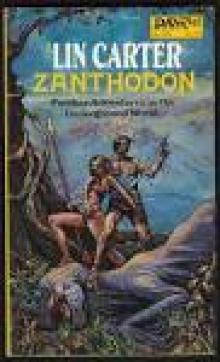 Zanthodon
Zanthodon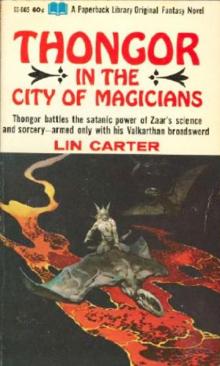 Thongor in the City of Magicians
Thongor in the City of Magicians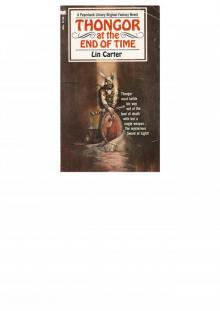 Thongor at the End of Time
Thongor at the End of Time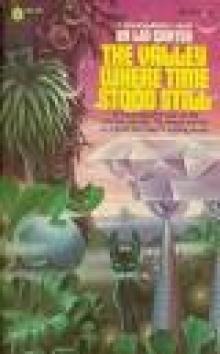 The Valley Where Time Stood Still
The Valley Where Time Stood Still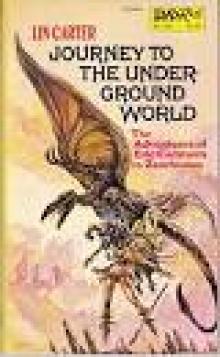 Journey To The Underground World
Journey To The Underground World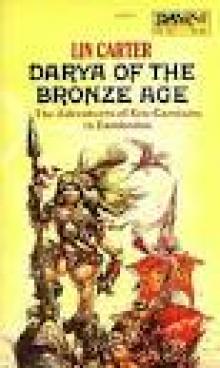 Darya of The Bronze Age
Darya of The Bronze Age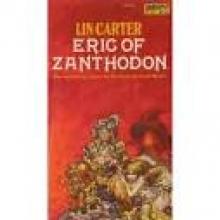 Eric of Zanthodon
Eric of Zanthodon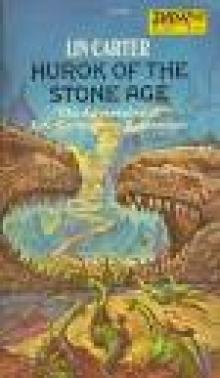 Hurok Of The Stone Age
Hurok Of The Stone Age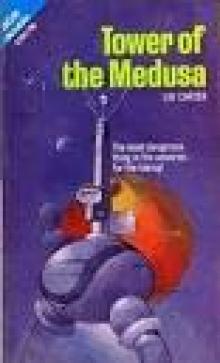 Tower Of The Medusa
Tower Of The Medusa Thongor Fights the Pirates of Tarakus
Thongor Fights the Pirates of Tarakus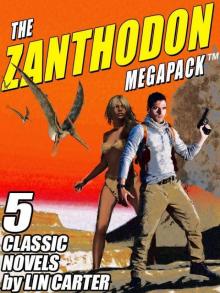 The Zanthodon MEGAPACK ™: The Complete 5-Book Series
The Zanthodon MEGAPACK ™: The Complete 5-Book Series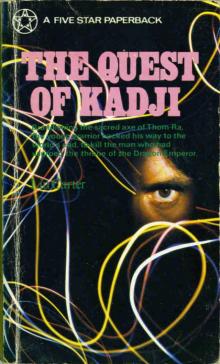 The Quest of Kadji
The Quest of Kadji Lin Carter - The Man Who Loved Mars
Lin Carter - The Man Who Loved Mars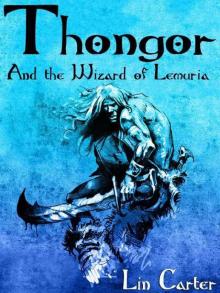 Thongor and the Wizard of Lemuria
Thongor and the Wizard of Lemuria The Nemesis of Evil
The Nemesis of Evil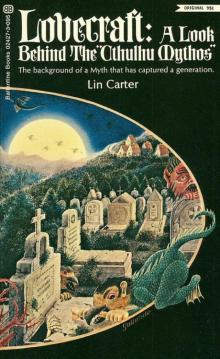 H.P.Lovecraft: A Look Behind Cthulhu Mythos
H.P.Lovecraft: A Look Behind Cthulhu Mythos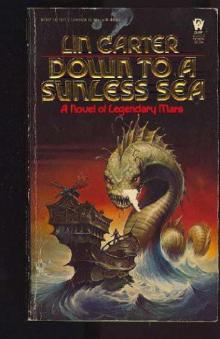 Lin Carter - Down to a Sunless Sea
Lin Carter - Down to a Sunless Sea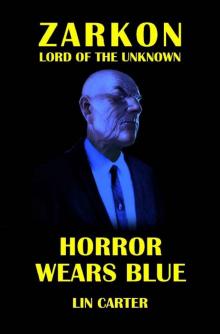 Horror Wears Blue
Horror Wears Blue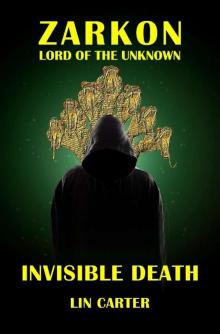 Invisible Death
Invisible Death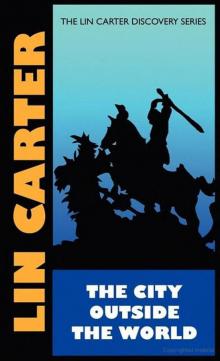 Lin Carter - The City Outside the World
Lin Carter - The City Outside the World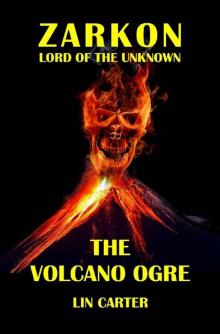 The Volcano Ogre
The Volcano Ogre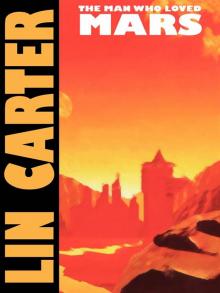 The Man Who Loved Mars
The Man Who Loved Mars